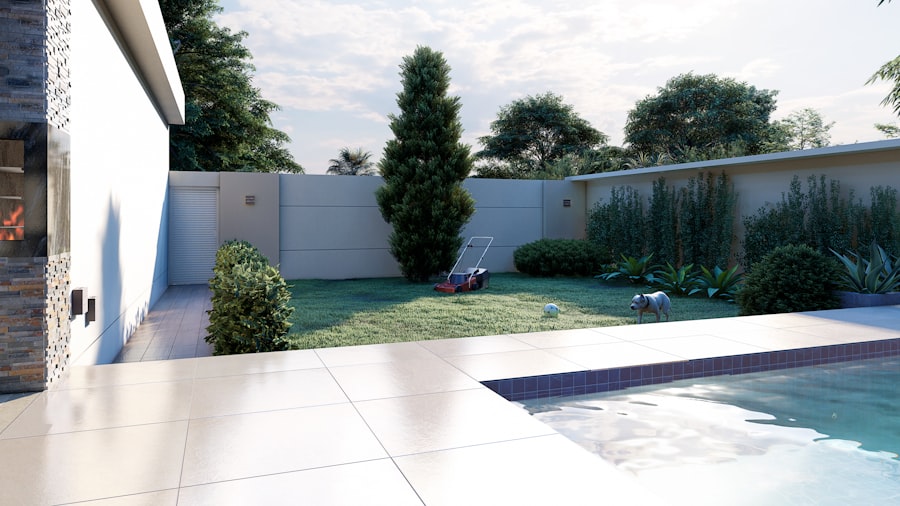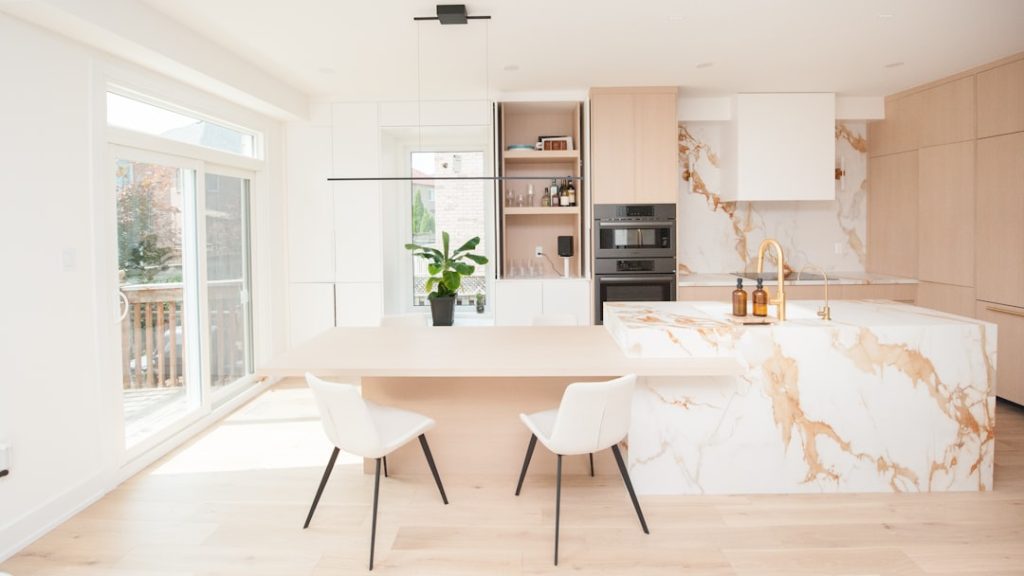When embarking on a renovation project, the first and most crucial step is establishing a comprehensive budget. This budget should encompass not only the direct costs associated with materials and labor but also a buffer for unexpected expenses that may arise during the renovation process. A well-structured budget begins with a detailed assessment of the scope of work.
For instance, if you are planning to remodel a kitchen, you should account for the costs of cabinets, countertops, appliances, plumbing, and electrical work. Each of these elements can vary significantly in price depending on quality and brand, making it essential to research and compare options before finalizing your budget. In addition to the primary costs, it is wise to allocate an additional 10% to 20% of your total budget for contingencies.
Renovations often uncover hidden issues, such as outdated wiring or plumbing problems, which can lead to increased expenses. For example, during a bathroom remodel, you might discover mold behind the walls that necessitates additional repairs. By planning for these potential surprises, you can avoid financial strain and ensure that your project remains on track.
Furthermore, consider the timeline of your renovation; longer projects may incur additional costs related to labor and living arrangements if you need to vacate your home during the work.
Deciding whether to hire a contractor or undertake a do-it-yourself (DIY) approach is a pivotal choice in any renovation project. Hiring a professional contractor can bring a wealth of experience and expertise to the table. Contractors are well-versed in local building codes, have established relationships with suppliers, and can often secure better pricing on materials due to their industry connections.
For instance, if you are renovating a large space like a basement, a contractor can efficiently manage the project timeline, coordinate subcontractors for plumbing and electrical work, and ensure that all aspects of the renovation meet safety standards. On the other hand, DIY renovations can be an appealing option for those looking to save money or who enjoy hands-on projects. Tackling tasks such as painting, flooring installation, or even cabinetry can be rewarding and cost-effective if you possess the necessary skills.
However, it is essential to realistically assess your capabilities and the complexity of the project. For example, while painting may seem straightforward, installing new electrical fixtures or plumbing requires specialized knowledge and could lead to costly mistakes if not done correctly. Therefore, it is crucial to weigh the pros and cons of each approach carefully and consider factors such as time commitment, skill level, and the potential for errors.
Key Takeaways
- Plan a detailed budget covering all renovation expenses to avoid overspending.
- Weigh the pros and cons of hiring a contractor versus doing renovations yourself.
- Account for permit and inspection fees as part of the overall renovation cost.
- Select materials and fixtures that balance quality, style, and budget.
- Be aware of hidden costs like unexpected repairs and project delays when planning.
Understanding Permit and Inspection Costs
Navigating the world of permits and inspections is an often-overlooked aspect of home renovations that can significantly impact your budget. Many municipalities require permits for various types of renovations, particularly those that involve structural changes, electrical work, or plumbing modifications. The costs associated with obtaining these permits can vary widely depending on your location and the scope of your project.
For instance, a simple kitchen remodel may only require a minor permit costing a few hundred dollars, while a major addition could necessitate multiple permits totaling thousands. In addition to permit fees, homeowners should also factor in inspection costs. Inspections are typically required at various stages of the renovation process to ensure compliance with local building codes and safety regulations.
These inspections may involve multiple visits from city officials or licensed inspectors who will assess the work completed. Failing to obtain the necessary permits or pass inspections can lead to fines or even the requirement to undo completed work. Therefore, it is advisable to consult with local authorities early in the planning process to understand what permits are needed and their associated costs.
Choosing Materials and Fixtures

The selection of materials and fixtures is one of the most enjoyable yet challenging aspects of any renovation project. The choices you make will not only affect the aesthetic appeal of your space but also its functionality and durability. When selecting materials, it is essential to consider factors such as quality, maintenance requirements, and long-term value.
For example, while granite countertops may offer a luxurious look, they require regular sealing to maintain their appearance and resist stains. In contrast, quartz countertops provide similar aesthetics with less maintenance. Additionally, it is crucial to align your material choices with your overall budget.
High-end finishes can quickly escalate costs; therefore, it may be beneficial to prioritize certain areas while opting for more economical options in others. For instance, investing in high-quality flooring can enhance the overall look of your home while choosing more affordable cabinetry can help keep costs manageable. Furthermore, consider energy-efficient fixtures such as LED lighting or low-flow faucets; these not only contribute to sustainability but can also lead to long-term savings on utility bills.
Hidden Costs to Consider
| Hidden Cost | Description | Potential Impact | Example |
|---|---|---|---|
| Maintenance Fees | Ongoing costs for upkeep and repairs | Can increase total ownership cost by 10-20% | Regular servicing of equipment |
| Training Expenses | Costs to train staff on new systems or processes | May delay productivity and add 5-15% to project budget | Workshops and certification courses |
| Downtime | Loss of productivity during system failures or transitions | Can reduce revenue by up to 25% during outages | System upgrades causing temporary shutdown |
| Compliance Costs | Expenses related to meeting regulatory requirements | May add 3-10% to operational costs | Data protection and reporting standards |
| Hidden Taxes and Fees | Unexpected government or service charges | Can increase costs by 2-8% | Import duties or service surcharges |
While budgeting for visible expenses is essential, homeowners must also be vigilant about hidden costs that can arise during renovations. These often-overlooked expenses can include everything from temporary housing costs if you need to vacate your home during extensive renovations to increased utility bills due to construction activities. For example, if you are renovating your home’s heating system or adding new windows, you may experience fluctuations in energy consumption that could impact your monthly bills.
Another hidden cost that many homeowners fail to anticipate is the potential need for additional furnishings or decor once renovations are complete. A newly remodeled space may require new furniture or window treatments that align with the updated aesthetic. Additionally, if structural changes are made—such as removing walls or adding windows—this could alter how light enters the space and necessitate adjustments in lighting fixtures or paint colors.
By considering these hidden costs upfront, you can create a more accurate budget that reflects the true financial impact of your renovation project.
Timeframe for Renovation Completion
Establishing a realistic timeframe for completing renovations is critical for managing expectations and ensuring a smooth process. The duration of a renovation project can vary significantly based on its complexity and scope. For instance, a simple bathroom update may take only a few weeks, while a full home remodel could extend over several months or even longer.
It is essential to communicate openly with contractors or team members about timelines and any potential delays that may arise due to unforeseen circumstances. Moreover, understanding how different phases of renovation overlap can help streamline the process. For example, while waiting for permits to be approved, you might begin sourcing materials or planning design elements.
This proactive approach can help minimize downtime and keep your project moving forward efficiently. Additionally, be prepared for potential delays caused by factors such as weather conditions or supply chain issues; these are common in construction projects and should be factored into your overall timeline.
Financing Options for Renovation Projects

Financing a renovation project requires careful consideration of available options and their implications on your financial health. Homeowners often turn to personal loans or home equity lines of credit (HELOCs) as viable financing solutions. Personal loans typically offer fixed interest rates and predictable monthly payments but may come with higher interest rates compared to secured loans like HELOCs.
On the other hand, HELOCs allow homeowners to borrow against their home’s equity but come with variable interest rates that can fluctuate over time. Another option worth exploring is government-backed loans specifically designed for home improvements, such as FHA 203(k) loans or Fannie Mae HomeStyle loans. These programs enable homeowners to finance both the purchase of a home and its renovation costs within a single mortgage product.
However, qualifying for these loans often requires meeting specific criteria related to credit scores and income levels. It is advisable to consult with financial advisors or mortgage professionals who can guide you through the various financing options available based on your unique circumstances.
Adding Value to Your Home through Renovations
Renovations not only enhance your living space but also serve as strategic investments that can significantly increase your home’s market value. Certain renovations tend to yield higher returns on investment (ROI) than others; for instance, kitchen remodels consistently rank among the top projects for boosting home value. Upgrading appliances, countertops, and cabinetry can create an inviting atmosphere that appeals to potential buyers.
Similarly, bathroom renovations also offer substantial ROI; even minor updates such as new fixtures or fresh paint can make a significant difference in perceived value. Curb appeal should not be overlooked either; exterior improvements like landscaping enhancements or new siding can create an inviting first impression that attracts buyers from the outset. Ultimately, understanding which renovations provide the best return on investment allows homeowners to make informed decisions that align with their long-term financial goals while creating spaces they love to live in.




